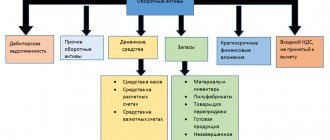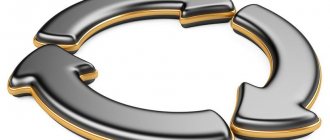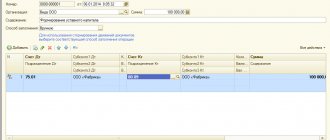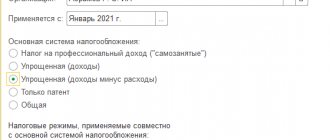After almost two years of adjustments, the draft FSBU 6/2020 “Fixed Assets” was released. The draft standard has already passed an independent anti-corruption examination and is awaiting registration with the Ministry of Justice and official publication. Today it is planned that the new standard, after its adoption, will cancel the PBU 6/01 “Accounting for fixed assets” currently used by accountants. If everything goes smoothly and the document is not returned for revision, then FSBU 6/2020 can be applied starting in 2021.
Let's look at the main changes that will affect the accounting of fixed assets after the new standard comes into force. First of all, let’s compare the standards of the still valid PBU 6/01 and the future FSBU 6/2020.
The FSB makes a reference to the standards IAS 36 “Impairment of Assets”, introduced in Russia by Order of the Ministry of Finance dated December 28, 2015 No. 217n, and International Financial Reporting Standard (IFRS) 13 “Fair Value Measurement”, introduced in effected by order of the Ministry of Finance of Russia dated December 28, 2015 No. 217n. Thus, in order to correctly account for fixed assets in financial statements, it is necessary to apply the rules of the IFRS standards in force in Russia.
There is a separate group of fixed assets with accounting features - “Investment real estate”. These are fixed assets, which are real estate intended to be provided for a fee for temporary use and (or) to generate income from an increase in its value (paragraph 3 of clause 12 of FSBU 6/2020). Such property must be accounted for separately from other fixed assets.
The concept of liquidation value appears. The liquidation value of an item of fixed assets is the amount that the organization would receive in the event of disposal of this item (including the value of material assets remaining from disposal) after deducting the estimated costs of disposal. Moreover, an object of fixed assets is considered as if it had already reached the end of its useful life and was in a state characteristic of the end of its useful life (paragraph 2 of paragraph 31 of FSBU 6/2020). The company must determine the liquidation value of each fixed asset item when accepting it for accounting and review this value every year.
A requirement is being introduced to check fixed assets for impairment (clause 39 of FAS 6/2020). Compliance with this provision of the Federal Accounting Service will allow the requirement of prudence to be met when preparing financial statements; impairment testing will not allow fixed assets to be reflected in the company’s balance sheet at an overestimated value.
Next, we will consider the changes made by the legislator to the usual norms.
Subscribe to the magazine “Calculation” or “Calculation. Premium" for the 1st half of 2021!
Criteria for classification as fixed assets
In the FSBU, as part of the criteria, legislators added the presence of a material form; previously there was no such criterion in the PBU.
As one of the criteria, they added that a fixed asset is also considered an asset intended to be leased. Previously, PBU 6 classified assets for use as profitable investments in tangible assets. The new FSBU states that the items of lease agreements must be accounted for in accordance with FSBU 25/2018 “Lease Accounting” (clause 8 of FSBU 6/2020).
The legislator removed the criterion that stipulated that in order to be recognized as a fixed asset, an asset should not be intended for sale.
Please note that FAS does not apply to this type of asset as “long-term assets for sale.” This type of asset is being introduced into PBU 16/02 “Information on discontinued operations” from January 1, 2021. Long-term assets for sale are an item of fixed assets or other non-current assets (except for financial investments), the use of which has been discontinued due to a decision to sell it and there is confirmation that the resumption of use of this item is not expected (an appropriate management decision has been made, actions to prepare an asset for sale, a sale agreement has been concluded, etc. (clause 10.1 of PBU 16/02). Table 1. Criteria for classification as fixed assets
| PBU 6/01, paragraph 4 | FSBU 6/2020, paragraph 4 |
| An asset is accepted by an organization for accounting as fixed assets if the following conditions are simultaneously met: the object is intended for use in the production of products, in the performance of work or provision of services, for the management needs of the organization, or for provision by the organization for a fee for temporary possession and use or for temporary use. use; the object is intended to be used for a long time, i.e. a period of more than 12 months or a normal operating cycle if it exceeds 12 months; the organization does not intend the subsequent resale of this object; the object is capable of bringing economic benefits (income) to the organization in the future | For accounting purposes, an object of fixed assets is considered to be an asset that is simultaneously characterized by the following characteristics: has a tangible form; is intended for use by an organization in the normal course of its activities in the production and (or) sale of its products (goods), when performing work or providing services, for temporary use for a fee, for management needs or for use in the activities of a non-profit organization aimed at achieving the purposes for which it was created; is intended for use by the organization for a period of more than 12 months or a normal operating cycle of more than 12 months; capable of bringing economic benefits (income) to the organization in the future (ensure that the non-profit organization achieves the goals for which it was created) |
Cost limit for fixed assets
The limit on the cost of classification as fixed assets of 40,000 rubles was removed from FSBU 6/2020. Now the company sets this cost limit independently in its accounting policy and additionally discloses information in its financial statements.
Fixed assets, the cost of which is less than the established limit, will have to be written off as expenses at a time; in PBU 6/01, fixed assets less than the established limit of 40,000 rubles should be reflected as inventories.
Table 2. Cost limit for fixed assets
| PBU 6/01, paragraph 4, paragraph 5 | FSBU 6/2020, paragraph 6 |
| Assets in respect of which the conditions provided for in paragraph 4 of these Regulations are met, and with a value within the limit established in the organization’s accounting policy, but not more than 40,000 rubles per unit, may be reflected in accounting and financial statements as part of inventories . In order to ensure the safety of these objects in production or during operation, the organization must organize proper control over their movement | An organization may decide not to apply this Standard in relation to assets that are simultaneously characterized by the characteristics established by paragraph 4 of this Standard, but have a value below the limit established by the organization. In this case, the costs of acquiring and creating such assets are recognized as expenses of the period in which they are incurred. The specified decision is disclosed in the accounting (financial) statements indicating the value limit established by the organization. The organization shall ensure adequate control over the presence and movement of such assets. |
Federal standard "Fixed assets".
What basic concepts does the standard contain? What is the procedure for accounting for fixed assets in institutions in accordance with this standard? How is the initial cost of the OS determined? What new depreciation provisions are included in the standard? How should disposal of fixed assets be accounted for and what is the procedure for disclosing information about them in reporting?
The Federal Standard “Fixed Assets” (hereinafter referred to as the Standard) establishes uniform requirements for accounting of assets classified as fixed assets, as well as requirements for information about them disclosed in accounting (financial) statements.
The standard is applied when maintaining accounting records of fixed assets, including those received within the framework of lease relations, but on the basis of the provisions of the federal standard “Lease”.
Useful life
The new FSBU added as a criterion for determining the useful life of fixed assets such a definition as obsolescence, plans for replacing fixed assets (including modernization, reconstruction, technical re-equipment), as well as restrictions imposed by contractual relations and management intentions.
Table 3. Useful life
| PBU 6/01, paragraph 20 | FSBU 6/2020, paragraph 10 |
| The useful life of an item of fixed assets is determined by the organization when accepting the item for accounting. The useful life of an item of fixed assets is determined based on: the expected life of this item in accordance with the expected productivity or capacity; expected physical wear and tear, depending on the operating mode (number of shifts), natural conditions and the influence of an aggressive environment, the repair system; regulatory and other restrictions on the use of this object (for example, rental period). In cases of improvement (increase) of the initially adopted standard indicators of the functioning of a fixed asset object as a result of reconstruction or modernization, the organization revises the useful life of this object | The useful life of an item of fixed assets is determined based on: the expected period of operation, taking into account productivity or capacity, regulatory, contractual and other operating restrictions, intentions of the organization's management; expected physical wear and tear, taking into account the operating mode (number of shifts), repair system, natural conditions, the influence of an aggressive environment and other similar factors; expected obsolescence, in particular as a result of changes or improvements in the production process or as a result of changes in market demand for products or services produced by fixed assets; plans for the replacement of fixed assets, modernization, reconstruction, technical re-equipment |
Attribution of costs for the acquisition of material assets to the expenses of the institution
The institution's expenses for the acquisition of fixed assets (their cost) are taken into account in the institution's expenses in different ways.
Thus, the cost of fixed assets can be transferred to the institution’s expenses either at a time or gradually, by calculating depreciation.
In other words, depreciation can be accrued: immediately in the amount of 100% of the cost of the fixed asset (at a time) when the facility is put into operation;
— gradually in accordance with calculated depreciation rates over the useful life. Let us recall that in this case, the depreciation amount must be calculated in a straight-line manner based on the book value of the fixed asset and the depreciation rate calculated based on its useful life, and this must be done from the first day of the month following the month the object was accepted for accounting, and until the cost of this object is fully repaid or its disposal.
The depreciation rate for each item of depreciable property is determined by the formula:
K = 1 / nx 100, where:
K is the depreciation rate as a percentage of the original (replacement) cost of the depreciable property;
N is the useful life of this depreciable property item, expressed in months.
The useful life of a fixed asset is the period during which it is intended to be used in the course of the institution’s activities for the purposes for which it was acquired (clause 44 of Instruction No. 157n).
According to clause 92 of Instruction No. 157n for fixed assets - movable property, depreciation is calculated in the following order:
— for fixed assets worth over 40,000 rubles. depreciation is accrued in accordance with depreciation rates calculated in accordance with the established procedure;
— for other fixed assets worth from 3,000 to 40,000 rubles. inclusive, depreciation is accrued in the amount of 100% of the book value when the facility is put into operation.
So, the costs of acquiring fixed assets necessary for the economic needs of the institution are taken into account in the institution’s expenses by calculating depreciation and are reflected in the accounting records in the following correspondence of accounts (clause 26 of Instruction No. 183n):
Debit of accounts 0 401 20 271 “Depreciation costs of fixed assets and intangible assets”, 0 109 00 000 “Costs of manufacturing finished products, performing work, services”
Credit to the corresponding analytical accounting accounts of account 0 104 00 000 “Depreciation”.
Since for fixed assets worth up to 3,000 rubles. inclusive, depreciation is not accrued, the costs of their acquisition are taken into account as expenses at a time when they are put into operation on the basis of the statement of issue of material assets for the needs of the institution (f. 0504210). This operation is reflected differently in accounting; we cited it above. However, let us recall this wiring once again:
Debit of account 0 401 20 271 “Depreciation costs of fixed assets and intangible assets”, corresponding analytical accounts of account 0 109 00 000 “Costs of manufacturing finished products, performing work, services”
Credit to the corresponding analytical accounting accounts of account 0 101 00 000 “Fixed assets”.
The cost of spent material reserves, soft equipment, and utensils that have become unusable, on the basis of primary documents for the corresponding operation and accounting object, is written off as expenses of the institution using the following correspondence accounts:
Debit of accounts 0 401 20 272 “Consumption of inventories”, 0 109 00 000 “Costs for the manufacture of finished products, performance of work, services”
Credit to the corresponding analytical accounting accounts of account 0 105 00 000 “Inventory”.
Example 3
Let's continue with the example. A 100% depreciation amount was accrued for the vacuum cleaner put into operation. This amount is included in the general operating expenses of the institution. The cost of consumed stationery was written off to overhead expenses.
These transactions should be reflected in accounting by the following correspondence of accounts:
| Contents of operation | Debit | Credit | Amount, rub. |
| The depreciation charge for the vacuum cleaner is reflected | 2 109 80 271 | 2 104 36 000 | 10 000 |
| The cost of consumed stationery has been written off | 4 109 70 272 | 4 105 36 000 | 2 500 |
Depreciation
In fact, the FSB establishes only three methods of depreciation: linear, reducing balance method and depreciation in proportion to the number of products. The procedure for applying these depreciation methods is reflected in paragraphs 36 and 37 of FSBU 6/2020.
The new standard will bring to the life of an accountant both long-awaited changes, for example, in relation to the cost criterion for classifying fixed assets, as well as unexpected ones that will entail the need to revise accounting processes, for example, the provision on checking fixed assets for impairment.
The changes that the standard will bring us will be significant for each entity, since almost 80% of legal entities have fixed assets in their assets, and according to paragraph 49 of the new FAS 6/2020, the consequences of changes in accounting policies in connection with the start of application of the standard should be reflected retrospectively (as if FSBU 6/2020 was applied from the moment the facts of economic life affected by it arose).
Table 4. Depreciation
| PBU 6/01, paragraph 18 | FSBU 6/2020, paragraph 6 |
| Depreciation of fixed assets is calculated using one of the following methods: linear method; reducing balance method; method of writing off value by the sum of the numbers of years of useful life; method of writing off cost in proportion to the volume of products (works) | The method of calculating depreciation is selected by the organization for each group of fixed assets from those established by this Standard |
Victoria Yazykova, Director of the Audit Department of KSK AUDIT LLC






